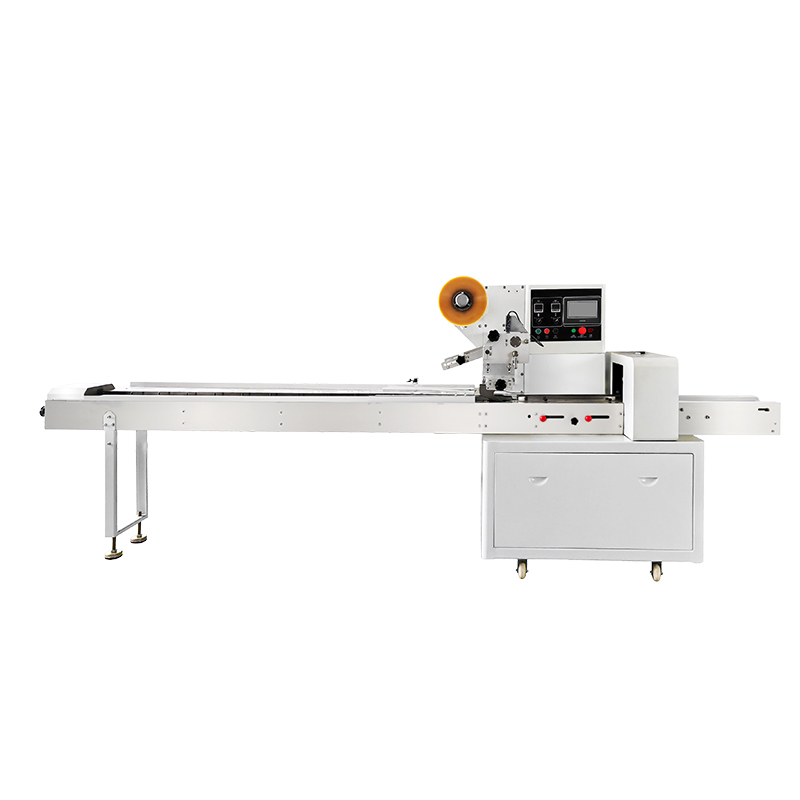
Top-Fed Film Wrapping Machine: Revolutionizing Efficient Packaging Technology
In modern industrial production, the efficiency and quality of packaging directly impact product competitiveness and cost control. With the rapid development of automation, the top-fed film wrapping machine has emerged as a “star equipment” in industries such as food, pharmaceuticals, and daily chemicals, thanks to its unique design and high performance.
1. Top-Fed Film Wrapping Machine: Redefining Packaging Logic
Traditional “bottom-fed” wrapping machines transport film upward from the base, wrapping and sealing products on a conveyor. In contrast, the top-fed film wrapping machine颠覆s this approach: its film moves downward from the top, synchronizing with the product’s movement. This design optimizes film tension control, minimizes friction between film and mechanical parts, and reduces material waste by 10%-15%, significantly cutting packaging costs.
2. Core Technical Advantages
-
High Speed with Precision
Equipped with servo-driven systems and intelligent sensors, the machine ensures accurate control of film tension, speed, and sealing. For irregularly shaped items, it auto-adjusts wrapping angles, achieving seamless seals at speeds of 60-120 packages per minute—30% faster than traditional models. -
Modular Design for Versatility
By swapping molds and adjusting parameters, a single machine handles boxes, bottles, pouches, and more. For example, it can wrap mooncake gift boxes or switch to vacuum-sealing frozen dumplings, enabling “one machine, multiple applications.” -
Smart Connectivity for Efficiency
Integrated IoT modules and human-machine interfaces (HMI) allow real-time monitoring of energy use, output, and error codes. High-end models support remote diagnostics, slashing downtime. A dairy producer reported 70% fewer manual interventions and 40% higher efficiency after adoption.
3. Breakthrough Applications
-
Food Industry
- Heat-sensitive products: Chocolate and cheese avoid film deformation with top-fed designs that minimize contact with heat sources.
- Fragile item protection: Overhead film distribution evenly cushions eggs or pastries, reducing breakage rates.
-
Pharmaceuticals
GMP-compliant models with stainless-steel bodies and enclosed structures ensure sterile packaging for medicines and medical devices. -
E-commerce Logistics
Integrated weighing and labeling functions enable fully automated “pack-and-ship” workflows, meeting demands for fast, small-batch orders.
4. Market Outlook: Sustainability Meets Intelligence
The Global Packaging Machinery Market Report predicts an 8.5% CAGR for smart packaging equipment from 2023–2028, driven by:
- Environmental regulations: Policies like the EU Plastic Tax incentivize film-saving technologies, with top-fed machines cutting plastic use by over 15%.
- Flexible production needs: Rising demand for customized packaging favors machines with rapid parameter-switching capabilities.
5. Future Innovations
- AI-powered vision inspection: Real-time defect detection and auto-correction for flawless output.
- Biodegradable film compatibility: Temperature-control modules tailored for PLA/PHA films.
- Digital twin integration: Virtual simulations to optimize packaging setups and minimize trial waste.




